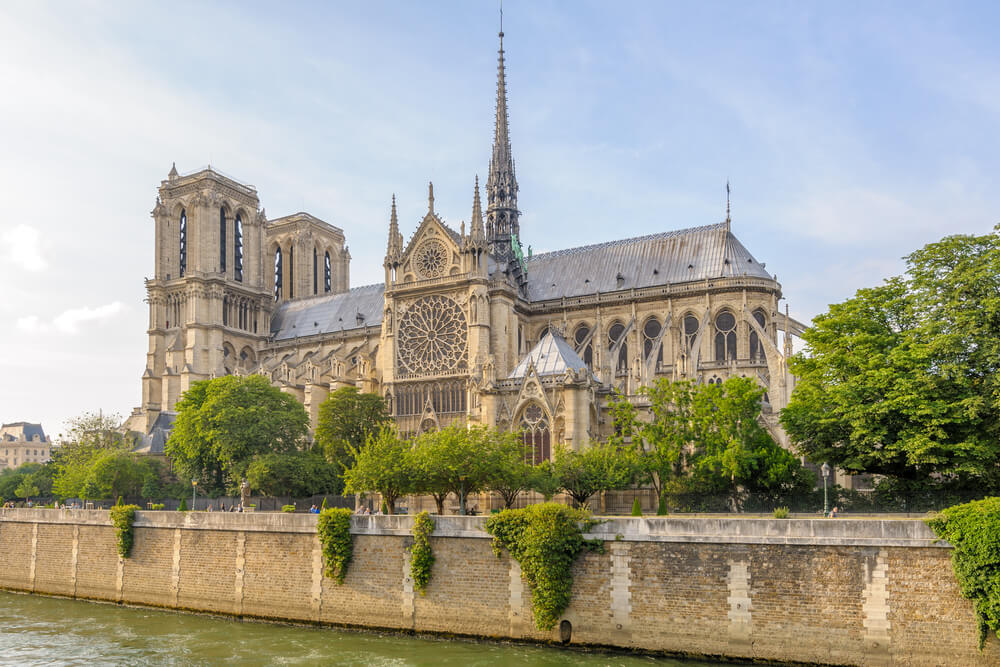Can one mourn a building, cry for it as one weeps for a loved one? Yes, if this loved one is Notre Dame Cathedral.
I am mourning after the fire which gutted the great structure. I am choked, hurting, in sorrow.
No other cathedral or church has so touched me. I have seen my share of great places of Christian worship in and near Paris, from the Sacre Coeur basilica to the Chartres Cathedral. I have seen the cathedral in Florence, the Sistine Chapel in Rome, and churches, churches everywhere in Italy. The English cathedrals are well known to me: Westminster, St. Paul’s, Canterbury, Wells and York (known as the York Minster).
But it is on the Ile de la Cite, in the middle of the Seine River in Paris, that I found, for me, the middle of Christendom.
Cry the beloved building, sitting there for more than eight centuries, witness to everything: war, plague, revolution, the crowning of the Emperor Napoleon, and conquest. And, let us not forget, the setting for one of the great novels of all time, Victor Hugo’s “The Hunchback of Notre Dame,” published in 1831.
For me, visiting Notre Dame for the first of many visits was to feel humanity’s eternal striving for God; striving in a space where it was possible to believe. That is not to say that, for some, every holy site is place for that, but I sensed it the first time I first went through the massive doors decades ago, and the many times since then.
Notre Dame with its flying buttresses, ribbed vaulting and leering gargoyles was, for me, the ultimate religious structure; man’s finest architecture, craftsmanship and imagination let loose in the confines of medieval expectations. It had dignity, function and innovation, and supreme commitment to purpose — the whole building a prayer.
Winston Churchill said we shape buildings and then they shape us. Quite so. Notre Dame has shaped France since medieval times, even as it has undergone its own struggles. It was ravaged by fire — but not a badly as now — and had fallen into disrepair and disrespect before Victor Hugo turned it into the most famous church ever through a story of love and pain, of mob violence, of betrayal, of sanctuary and, ultimately, of love unto death.
Hugo wrote his novel to save the cathedral. He was appalled by the disappearing medieval architecture of Paris. Hugo more than saved Notre Dame: He gave it to the world. From being the great cathedral of Paris, it became the cathedral of the world: a place where millions upon millions of people could seek a brief sanctuary from daily life.
Once I had climbed up some stairs in Notre Dame and heard the most extraordinary noise. It sounded as though the cathedral was being attacked by locusts. Then I saw the noisemakers in the nave: a tour group of Japanese, respectfully photographing without flash.
It seems that Notre Dame will be rebuilt, and it should be, but for me, it will have lost something — that sense of more than eight centuries of mankind’s striving to find God and possibly for some succeeding.

 Follow
Follow
Dear Llewellyn,
I agree with almost everything you say. Notre Dame de Paris is THE church, rivalled in the East by Saint Sophia but the fate of which as a church and even a neutral place of awe is in the balance at present.
I am sorry for you that the rebuilding of Notre Dame takes away some je ne sais quoi. I can’t agree. In the event, and miraculously (yes, miraculously but with a lot of human help), the main structure was spared, the Old Lady (as she is known here) stands on her own two feet, the vast majority of the works inside were saved, the magnificent 15th-century organ went undamaged, the rose windows as well, though their solidity must be checked.
Notre Dame remains the same Old Lady, she just needs a “lifting” and of course that will take a couple of decades, which may or may not mean that worshipers and tourists won’t be able to look inside (and what would they see anyway?). They can still admire from the outside, from the parvis which is always covered with people taking selfies with Notre Dame (even today).
What needs rebuilding is the roof beams, which only a few people ever saw up close. And the spire, which dates only to the 19th century and which should be fairly easy to replace at the appropriate time.
So do not despair, dear Llewellyn. Paris is still Paris, and Notre Dame is still THE church.
P.S. Yes, as you, I know Victor Hugo’s novel as “The Hunchback of Notre Dame.” That draws attention to Quasimodo, doesn’t it? But the original title, in French, is simply “Notre Dame de Paris.”
Best
Ann
Humanity weeps